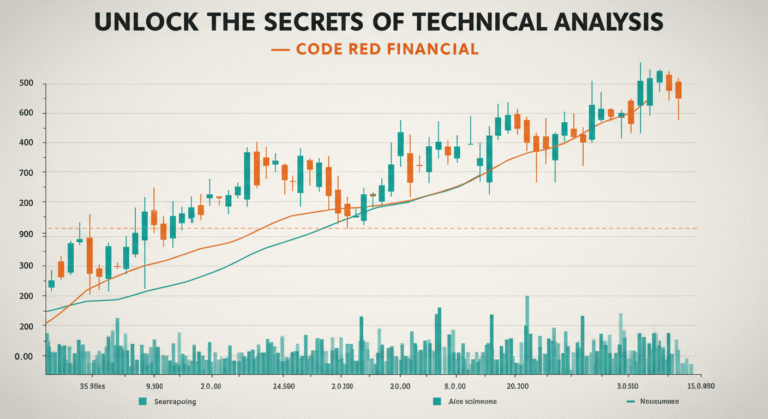
Understanding Wealth Inequality: Why It Matters to Your Financial Future
Wealth inequality is a significant economic issue that shapes the financial landscape for individuals and families globally. It pertains to the uneven distribution of assets—encompassing homes, investments, and savings, net of liabilities. Understanding this disparity is crucial due to its direct impact on economic stability, social mobility, and personal financial trajectories.
While income inequality addresses disparities in earnings, wealth inequality elucidates disparities in asset ownership. This distinction is paramount because wealth is foundational to long-term financial security and intergenerational opportunity.
The Stark Reality of the Wealth Gap: A Global Perspective
Current statistical data reveals a pronounced global wealth disparity. Consider global wealth as a finite resource. According to the Credit Suisse Global Wealth Report, the wealthiest 1% of the population possesses a substantial 43% of global wealth, whereas the bottom 50% collectively holds less than 1%. This disparity transcends mere numerical values, manifesting in tangible consequences that may precipitate social instability and constrain upward mobility for a significant portion of the global population.
Wealth concentration is not arbitrary; it is frequently correlated with demographic factors such as race, education, and geographic location. In the United States, racial wealth disparities are particularly evident. As of 2022, the median wealth for White households was approximately $284,310. In contrast, Black households exhibited a median wealth of $44,100, and Hispanic households, $62,120. These figures indicate that for every dollar of wealth held by White households, Black and Hispanic households hold approximately 23 and 19 cents, respectively. These data points are not merely statistical; they reflect enduring systemic advantages and disadvantages that continue to influence wealth accumulation. Although career paths and choices are contributing factors, these figures underscore the salient issue of racial wealth inequality.
Historically, wealth inequality is not a static phenomenon. It fluctuates in response to economic shifts and policy modifications. The Gini coefficient, a recognized metric for quantifying wealth distribution, has demonstrated an upward trend in numerous developed nations since the late 20th century. Factors such as globalization, technological advancements, and tax policies that may favor higher wealth brackets are frequently cited as contributing elements. These trends raise pertinent questions regarding the necessity for systemic adjustments to foster a more equitable financial future for all.
The Ripple Effect: Societal and Personal Impacts of Wealth Inequality
Wealth inequality extends beyond statistical abstraction, exerting wide-ranging effects across societal domains, including individual financial well-being.
- Impediment to Economic Growth: When a substantial segment of the population possesses limited financial resources, economic repercussions ensue. Diminished aggregate wealth among a broad population correlates with reduced consumer expenditure. Constrained consumer spending can lead to decreased demand, thereby impeding overall economic expansion. Empirical studies suggest that a more equitable distribution of wealth is conducive to more robust and sustainable economic performance.
- Constraints on Social Mobility: Wealth inequality poses significant obstacles to social mobility. Individuals from lower socioeconomic backgrounds often encounter systemic impediments to accessing quality education and professional opportunities. The absence of these critical resources can perpetuate cycles of poverty, thereby limiting individual potential and impeding societal advancement. Communities characterized by high wealth inequality frequently exhibit lower rates of educational attainment and workforce participation.
- Adverse Health Outcomes: Financial well-being and physical health are interconnected. Wealth inequality correlates with disparities in access to healthcare and nutritious food. Lower socioeconomic status is associated with elevated incidences of chronic illnesses, mental health challenges, and diminished overall well-being. Individuals with limited financial assets may experience reduced access to timely medical care, exacerbating health disparities across different population segments.
- Potential for Political Instability: Extreme wealth disparities can destabilize political systems. Perceptions of economic disenfranchisement can foster social unrest. Historical precedents illustrate that pronounced wealth gaps have contributed to social movements and demands for systemic reforms aimed at achieving greater equity and participatory governance.
Unpacking the Drivers: Factors Contributing to the Wealth Gap
Comprehending wealth inequality necessitates an examination of its underlying drivers. Several interconnected factors are implicated:
- Technological Advancements and Labor Market Disruption: While technological advancements enhance productivity, they may also engender job displacement, particularly within lower-skill sectors. Automation in manufacturing and the proliferation of digital service platforms exemplify this trend. Although technology generates high-skill, high-remuneration employment, it can simultaneously displace jobs traditionally accessible to individuals with less formal education, thereby widening income and wealth disparities.
- Globalization and Uneven Economic Landscapes: Globalization, while fostering interconnectedness, can also concentrate wealth within regions and sectors optimally positioned to capitalize on global commerce and investment. Developed economies with established industries and infrastructure often attract disproportionate capital and talent, potentially marginalizing less developed regions and exacerbating both domestic and international wealth inequalities.
- Tax Policies and Wealth Accumulation: Taxation systems can inadvertently amplify wealth inequality. Complex tax codes may contain provisions, such as exemptions and differential rates on capital gains, that disproportionately benefit high-income earners and those with substantial existing wealth. This can instigate a positive feedback loop wherein wealth concentration accelerates among the affluent.
- Intergenerational Wealth Transfer: Inherited wealth constitutes a significant factor in perpetuating wealth inequality. Families that inherit wealth often possess a substantial initial advantage, facilitating the maintenance or augmentation of their financial standing. Individuals without inherited wealth may face a considerably more challenging trajectory in wealth accumulation, thereby reinforcing socioeconomic stratification across generations.
Bridging the Divide: Strategies for Promoting a More Equitable Future
Addressing wealth inequality necessitates a multifaceted strategy encompassing robust policy interventions:
- Progressive Tax Reform: The implementation of a more progressive tax system, wherein higher income earners contribute a proportionally larger share of their income in taxes, is a frequently proposed measure. This approach could generate revenue to support public services and social programs that disproportionately benefit individuals with fewer resources. The tax systems of nations such as Sweden and Denmark serve as examples of progressive models that have demonstrated potential in mitigating inequality.
- Universal Basic Income (UBI) as a Social Safety Net: Universal Basic Income (UBI), which entails providing a regular, unconditional income to all citizens, is gaining consideration as a potential mechanism to establish a foundational social safety net. Pilot programs conducted in countries such as Finland and Canada have yielded preliminary indications of UBI’s efficacy in poverty reduction and enhancement of well-being. However, the long-term economic viability and broader societal impacts of UBI remain subjects of ongoing debate.
- Strategic Investment in Education and Healthcare Accessibility: Promoting equitable access to high-quality education and healthcare is essential for fostering a level economic playing field. Nations such as Germany, with its well-developed vocational training systems, exemplify the potential of prioritizing education in mitigating economic disparities and promoting upward mobility.
- Minimum Wage Augmentation: Increasing the minimum wage represents a direct policy lever for augmenting the earnings of low-wage workers. Several jurisdictions have implemented minimum wage increases, with emerging evidence suggesting potential improvements in living standards and localized economic stimulus without substantial adverse employment effects.
- Now, I must admit that this one is very tricky, because while $20 per hour for instance might very well be an option for some regions, many others may struggle to satisfy those demands.
- Promotion of Inclusive Capitalism: Encouraging a shift in corporate priorities to encompass the well-being of all stakeholders—employees, customers, communities, and the environment—is critical. Businesses that adopt socially responsible practices, such as fair wage compensation and sustainable operational policies, can contribute to a more equitable and sustainable economic ecosystem.
Global Case Studies: Lessons in Addressing Wealth Inequality
Examining nations that have demonstrated progress in addressing wealth inequality offers valuable insights. Scandinavian countries, including Sweden, Norway, and Denmark, are frequently cited as instructive examples. These nations integrate progressive taxation with comprehensive welfare systems and inclusive economic policies to achieve comparatively lower wealth disparities.
- Sweden’s Progressive Model: Sweden’s commitment to egalitarianism is manifested in its highly progressive tax system, which funds extensive social benefits such as universal education, comprehensive healthcare, and robust social services accessible to all citizens. This model, rooted in egalitarian principles and a strong political commitment to economic justice, has resulted in one of the lowest levels of income inequality globally.
- Denmark’s Robust Social Safety Net: Denmark also employs a high-tax system coupled with a comprehensive welfare state. Free education and healthcare are fundamental components, effectively reducing barriers to access for lower-income individuals. Proactive labor market policies further empower workforce participation and mitigate long-term reliance on social assistance.
- New Zealand’s Multifaceted Reforms: New Zealand has adopted a multi-pronged approach encompassing affordable housing initiatives, investments in quality education, and universal healthcare access. Recent policy reforms, including minimum wage increases and targeted support for lower-income families, are aimed at narrowing income disparities and promoting broader economic inclusion.
These international examples underscore the significance of harmonizing taxation with social investments and adopting inclusive policies to cultivate a more equitable future characterized by broader wealth distribution.
Technology: A Dual-Edged Instrument in Wealth Distribution
Technology’s role in wealth distribution is multifaceted. While it can exacerbate inequality, it also presents opportunities for mitigation.
- Automation, Digital Platforms, and the Skills Gap: Automation and the proliferation of digital platforms have contributed to wealth inequality by creating a divergence between high-skill technology workers and lower-skill laborers. Job displacement in sectors undergoing automation amplifies income disparities. The ascendance of technology conglomerates, often driven by algorithms and data analytics, can concentrate wealth and potentially limit opportunities for smaller enterprises and marginalized communities.
- Financial Technology for Enhanced Financial Inclusion: Conversely, technology can serve as a potent instrument for reducing wealth inequality and promoting financial inclusion. Financial technology (FinTech) innovations, such as microloan platforms, mobile banking solutions, and accessible investment applications, are empowering individuals with lower incomes by providing unprecedented access to financial services. These tools can facilitate savings, investment, and more effective financial management, thereby enabling wealth accumulation. Online education platforms are also democratizing access to skill development and knowledge acquisition, enhancing employability prospects.
To effectively address the wealth gap, it is imperative to strategically leverage technology’s potential for education and financial inclusion while proactively mitigating its adverse impacts on labor displacement and wealth concentration. Policymakers, technology developers, and business leaders must collaborate to foster a balanced approach that promotes both technological innovation and social equity, ensuring that the benefits of technological progress are broadly shared across society.
A Call to Action: Towards a More Equitable Financial Paradigm
The persistent and widening wealth gap raises fundamental questions regarding the efficacy of existing financial systems in addressing entrenched inequalities. A critical examination of conventional economic frameworks is warranted to assess whether a paradigm shift is necessary to prioritize equity and inclusivity alongside economic growth.
Advocates for systemic change contend that traditional financial models often prioritize profit maximization, potentially leading to systemic inequities that marginalize substantial segments of society. They advocate for a re-evaluation of economic systems, exploring innovative approaches that empower disenfranchised populations and promote a more equitable distribution of resources and opportunities.
However, systemic transformation is not solely a top-down endeavor; it necessitates collective action at the individual level. Active engagement in civic processes, support for community-based initiatives, and advocacy for policy reforms aimed at enhancing financial equity are essential components of a broader movement towards a more just and equitable financial landscape. Every individual action, from supporting fair trade practices to investing in local businesses, contributes to a larger collective effort.
Addressing wealth inequality is a shared responsibility. It requires critical self-reflection on personal relationships with finance and a commitment to contributing to a more equitable financial landscape for all. The trajectory of wealth distribution is not predetermined; it will be shaped by collective choices, concerted actions, and a shared vision for a more equitable future.







